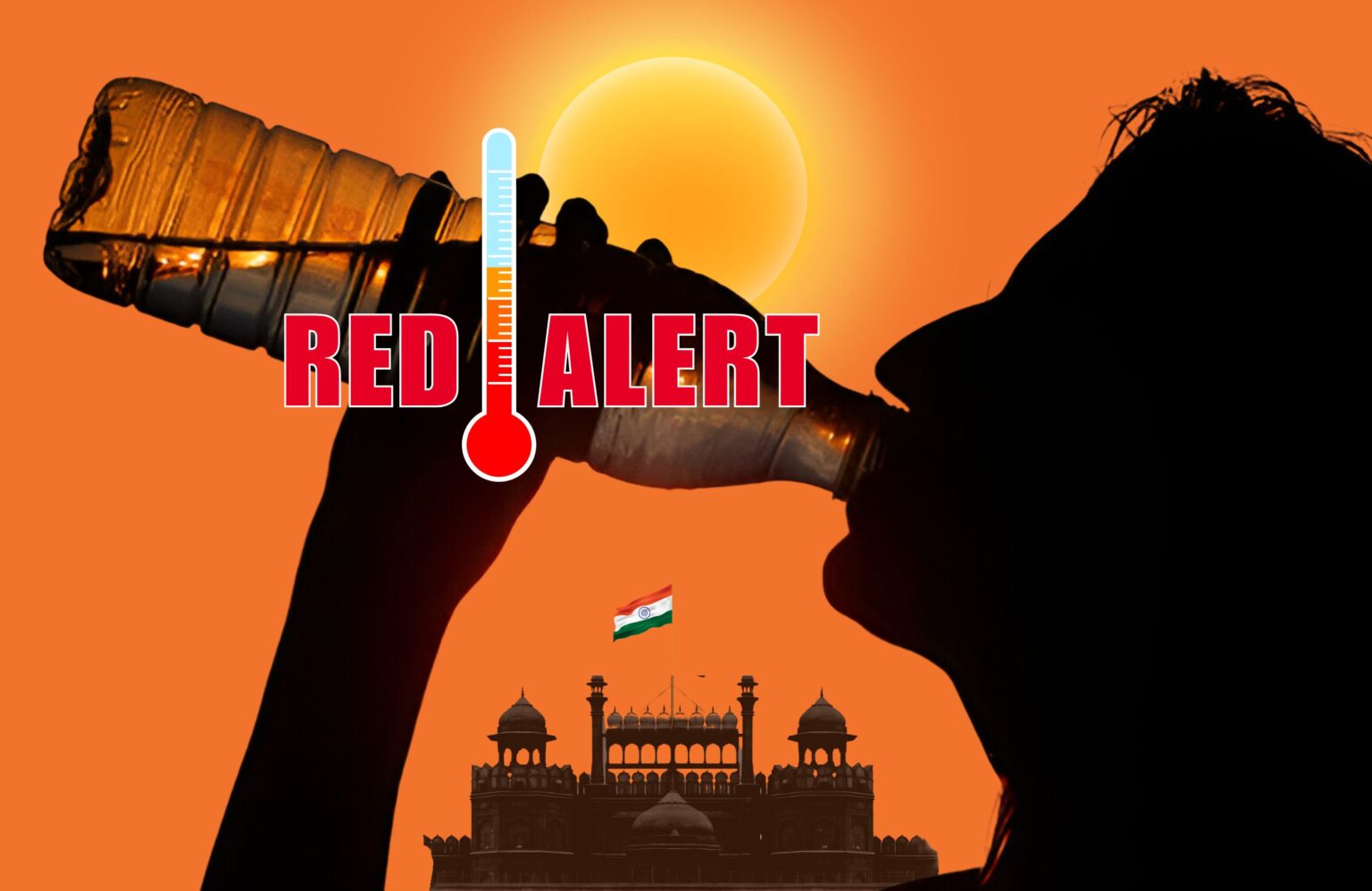The scorching heat wave continues in several parts of the country, with the India Meteorological Department’s (IMD) issuing a red alert for the northern part of India on Monday. According to the weather department, heatwave to severe heatwave conditions are likely to continue in Delhi, Punjab, Haryana, Chandigarh, West Uttar Pradesh, and Rajasthan until May 28.
Meanwhile, the Meteorological Department has issued a red alert for these states, highlighting the need for extreme care for vulnerable people.
“Heatwave to severe heatwave conditions are very likely over many parts of Punjab, Rajasthan, Haryana-Chandigarh-Delhi, and West Uttar Pradesh on May 27, 2024, and heatwave conditions are very likely over isolated places in East Uttar Pradesh, Madhya Pradesh, Vidarbha, Madhya Maharashtra, Marathwada, and Gujarat,” the IMD wrote in its bulletin.
Delhi saw a slight dip in temperatures compared to previous days but still remained three to five degrees above the seasonal average. The highest maximum temperature of 49.8°C was recorded in Phalodi (West Rajasthan), followed by Palam at 44.4°C, Najafgarh at 43.9°C, and Pusa and Pitampura both at 43.4°C.
According to IMD scientist Naresh Kumar, there will be no signs of relief from the heat in Delhi-NCR, Rajasthan, and Punjab for the next three to five days.
Reasons for Escalating Heat
El Niño
El Niño is a climate pattern that describes the unusual warming of surface waters in the eastern tropical Pacific Ocean. It is classified as the warm phase of a larger phenomenon called the El Niño-Southern Oscillation (ENSO).
El Niño occurs irregularly at two- to seven-year intervals and has a major impact on ocean temperatures, ocean currents, marine ecosystems, and weather patterns around the globe.
The name “El Niño” is a Spanish word that means “the little boy.”.
During an El Nino event, the trade winds that usually blow from east to west along the equator weaken or even reverse direction. This allows warm surface water from the western Pacific to move eastward, causing the sea surface temperatures in the central and eastern Pacific to become much warmer than usual, causing a rise in temperature in the eastern areas.
In El Nino years, India often faces warmer temperatures and less rainfall, causing droughts in some regions. India is likely to experience intense heat waves throughout the year due to the lingering impact of one of the strongest El Niño events on record.
Climate Change
With rising global temperatures, dangerous heat waves have begun permeating our routine indoor spaces. This gradual expansion into the realm of extreme heat is potentially the gravest consequence of climate change for India. Notably, India has observed a significant mean temperature increase of 0.15°C per decade since 1950, according to a 2020 assessment by the Ministry of Earth Sciences.
Urban Heat Islands
When many concrete buildings are built close to each other, they capture the heat within the area with no flow of heat outside, resulting in heat concentration in such places. In Delhi, areas like Sitaram Bazar, Connaught Place, and Bhikaji Cama see a rise of 7 to 8 degrees Celsius more than areas with less congestion.
Health Hazards Due to Scorching Heat
Extreme heat leads to a number of illnesses, including heat exhaustion, dehydration, and, in the worst cases, heatstroke and diarrhea. Migraines are also common. The most vulnerable are children and those with comorbidities like chronic kidney diseases, chronic gastroenteritis, and diabetes.
Due to the heat, the number of hypertension and sugar patients in hospitals has doubled. In such a situation, the risk of glaucoma triggering has also increased.
In an interview with Shiba Anjum Ansari, one of the patients of the heat wave in Delhi, she revealed the early symptoms of illness: “constant stomach issues, headaches, and nausea for at least three days.”.
On Thursday last week, at least 12 people in Rajasthan died of suspected heat stroke as large parts of India continued to swelter under a heat wave. The deaths in Rajasthan were suspected to have resulted from people falling sick due to heat stroke-like symptoms. Officials, however, have not yet ascertained the cause.
In another incident, four deaths were reported in Jalore, and two daily wage workers died in Barmer, where the mercury soared to 48.8 degrees Celsius, the highest temperature recorded in the country this year so far. Severe heat waves also claimed lives in Alwar, Bhilwara, Balotra, and Jaisalmer.
IMD’s Rainfall Prediction
According to the India Meteorological Department (IMD), light to moderate rainfall is expected at most places in the eastern districts of Sub-Himalayan West Bengal on May 27 and 28, with heavy to very heavy rainfall at isolated locations. The weather department has also forecast light to moderate rainfall at most places, accompanied by heavy to very heavy rainfall at isolated locations, over Assam, Meghalaya, Arunachal Pradesh, Nagaland, Mizoram, Manipur, and Tripura on May 27 and 28. Additionally, the IMD has warned of isolated extremely heavy rainfall over Assam and Meghalaya on May 27 and 28, Arunachal Pradesh on May 28, and Mizoram and Tripura on May 27. Furthermore, Kerala and Mahe are likely to experience isolated heavy rainfall on May 29 and 30.














